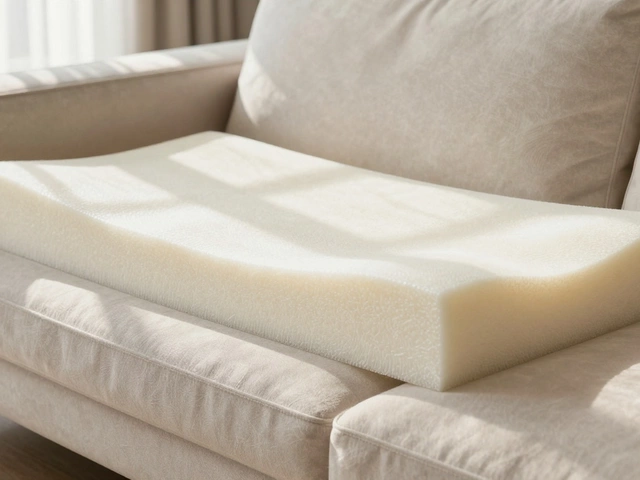Sofa Cushion Refilling Made Simple
If your sofa feels flat or lumpy, you don’t need to order a brand‑new set. Giving the cushions a fresh fill can bring back the bounce and make the whole room feel cozier. In this guide we’ll show you how to choose the right material, what tools you need, and the exact steps to get a plush sofa without a big expense.
Pick the Right Fill Material
The most common options are high‑density foam, low‑density foam, and polyester batting. High‑density foam holds its shape longest and works best for firm seating. Low‑density foam is softer and great if you love sinking in. Polyester batting adds a fluffy layer on top, giving that hotel‑style plush feel. Decide whether you want firm support, soft comfort, or a mix of both, then buy a little extra to allow for trimming.
How to Refill Your Sofa Cushions
Start by gathering a utility knife, marker, measuring tape, and a zip‑top bag (optional for keeping foam pieces tidy). Remove the old cushion cover – most have a hidden zip or Velcro. If there’s no zip, carefully cut a small opening at the back and plan to sew it closed later.
Measure the inside of the cushion shell. Write down the length, width, and depth so you can cut the new foam to the right size. Lay the foam on a clean surface, mark the measurements, and cut with a sharp knife. Cut a few pieces rather than one big block; this lets you shape the cushion more naturally and reduces the risk of a hard spot.
Layer the foam pieces inside the shell. If you’re using batting, wrap it around the foam or place a thin layer on top before closing the cover. Push the fill gently into the corners so there are no gaps. When the cushion feels evenly filled and bouncy, zip or sew the cover back up. A quick stitch with a heavy‑duty needle works fine for most fabric covers.
Give the cushion a little shake to settle the fill. If any area feels too firm, add a thin strip of batting. If it feels too soft, tuck in a bit more foam. The goal is a balanced feel – firm enough to hold shape but soft enough to relax into.
Finally, protect your work. Flip the cushions over and give them a gentle tap to even out any uneven spots. A fabric protector spray can help keep stains at bay, especially if you have kids or pets.
Regularly fluff the cushions by hand and rotate them every few weeks. This small habit stops the fill from shifting and keeps your sofa looking fresh for years.
With these steps, sofa cushion refilling becomes a quick weekend project that saves money and extends the life of your favourite couch. Give it a try – you’ll be amazed at how much comfort you can restore with just a few simple materials.






